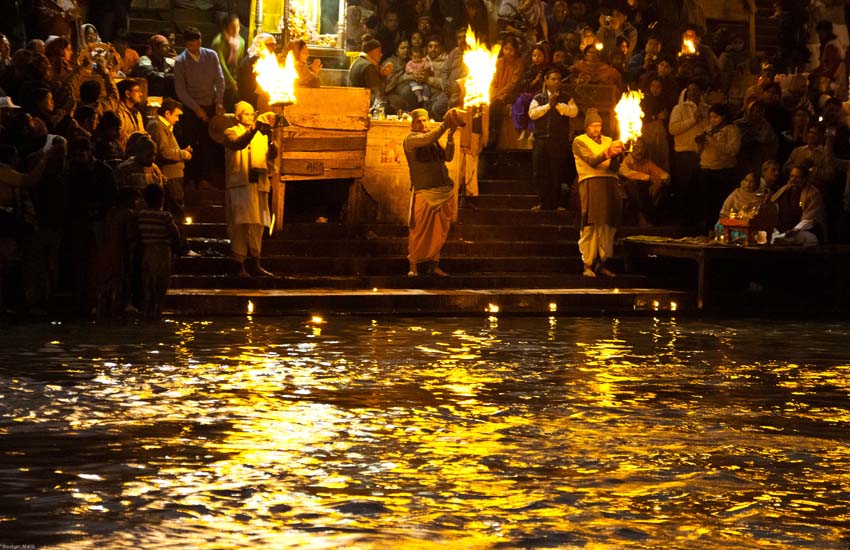Om
‘When there is a Kumbh Mela, that phages help. When sixty million people bathe in a small area, huge amounts of bacteria are rinsed off from their bodies. Suddenly the bacterial concentration is very high. Even though the phage concentration is initially very low, the chance of the proper bacterium meeting a phage is very likely. Having found out its prey, the phage will multiply and the whole area suddenly becomes rich in phages.
Sacred secrets of River Ganga
It is
estimated that 100 million people take Holy bath at Allahabad during this Kubha
Mela. Most people raise question that if this many people take bath in such a small
place in a water body, will it not cause contagious and harmful diseases?
As
we discussed in previous posts, River Ganga Water contains bacteriophage.
The bacteria which phages feed on can come from human sewage, or from human
bodies when they bathe. The human body in water in fact acts as a catalyst. The
higher the concentration of bathers the more food for the phages to feast on.
So wherever there are major bathing festivals (the various Kumbh Melas) and
high numbers of bathers (Varanasi, Allahabad) phages will flock.
‘When there is a Kumbh Mela, that phages help. When sixty million people bathe in a small area, huge amounts of bacteria are rinsed off from their bodies. Suddenly the bacterial concentration is very high. Even though the phage concentration is initially very low, the chance of the proper bacterium meeting a phage is very likely. Having found out its prey, the phage will multiply and the whole area suddenly becomes rich in phages.
Hence,
As more people bathe in Ganga, the river seems to acquire greater powers of
self-purification. To some it may also sound like an open invitation to
encourage people to dump untreated sewage into Ganga. But no one is advocating
this.
Another interesting fact was revealed in
British research during this khumba Mela. Those people who took holy bath in
Sacred River are getting free from Psychological and mental problems and to
some extent diseases. This is the power of River Ganga. This is the reason why
Hindus worship her with utmost respect.
We,
Hindus consider River Godavari as sacred and also give equal importance as we
give to Ganga. The 2003 Ardh Mela at Nasik (on the Godavari river) that
Godavari has also bacteriophages similar to that of River Ganga but
anyhow Ganga has its own importance . ‘Six million people bathed there. Researhers took water samples and found about
eight or nine different phages in that water,’ just about what you’d expect
when several million take a ‘holy dip’ together.’
Devendra
Swaroop Bhargava is now a retired professor of Hydrology from Roorkee
University. In the 1980s and 1990s, Bhargava published many papers in respectable
international journals, arguing that Ganga has special chemical and biological
properties that allow the river to absorb organic wastes at an astonishingly
high rate due to a remarkable ability to re-oxygenate itself. One that stuck in
my mind was the claim that animal bones submerged in a tank at IIT-Kanpur had
been dissolved within three days.
and some part is taken from Paper and NEWS media.

No comments:
Post a Comment